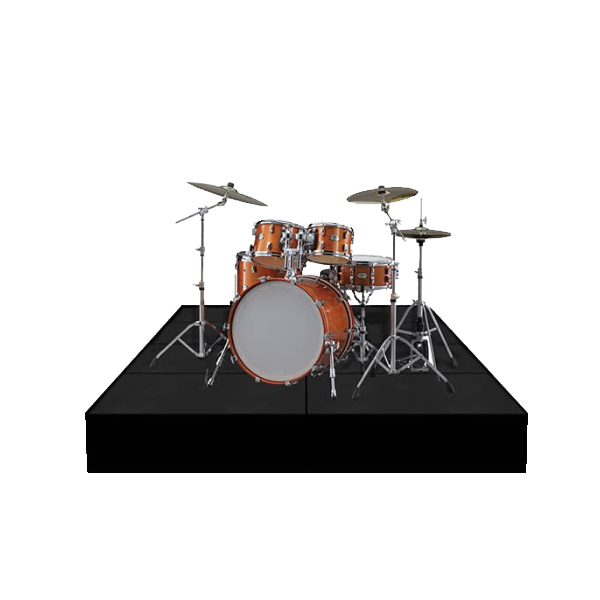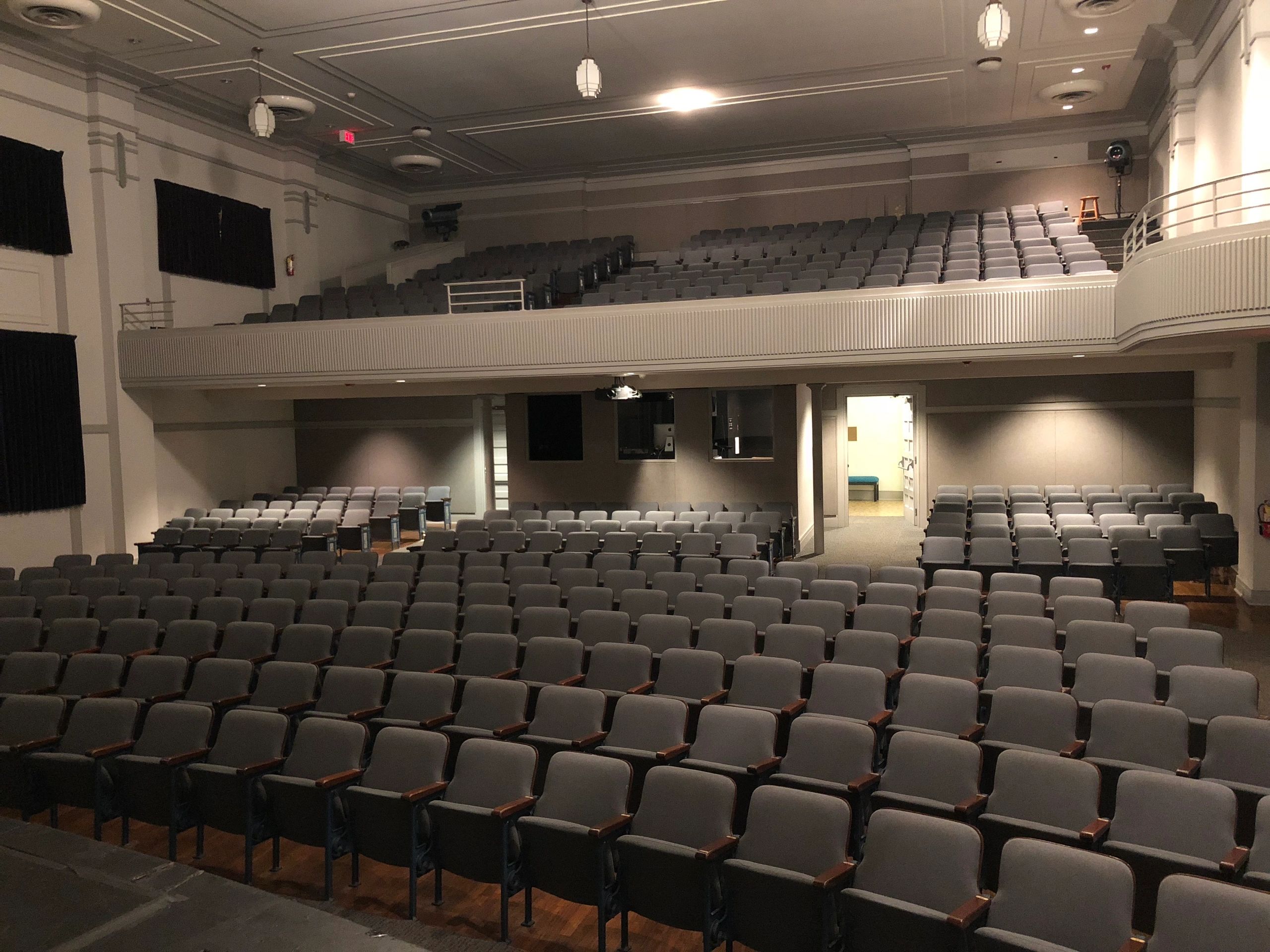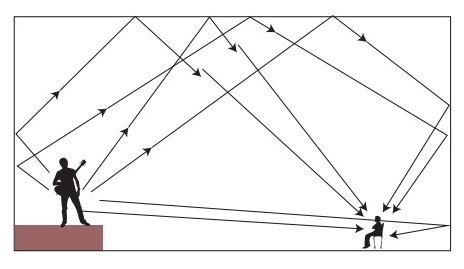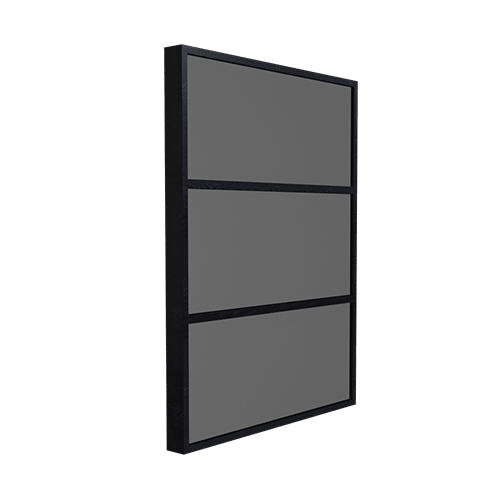The acoustic treatment for auditoriums is a complex subject with many variables and options to treat those issues. In acoustics, we have two types of rooms. We have small rooms and large rooms. Small rooms have large low-frequency issues along with middle and high-frequency issues. Auditoriums are large rooms that have less low-frequency issues and greater middle and high-frequency issues. Both rooms must first address any low-frequency issues first and foremost. It is the low-frequency issues that are the most difficult to treat and have the largest impact on sound quality. Low-frequency fundamentals form the basis for middle and high frequencies. All middle and high frequencies start with a lower frequency fundamental. You must reduce the strength or amplitude of all the low-frequency issues in any acoustic treatment for auditoriums if you are going to be successful in your acoustic goals. Let’s examine what those goals need to be.
Speech and Music Intelligibility
Rooms no matter what the size produces distortion. The distortion takes many forms which we will discuss. Our primary objective in larger rooms is two-fold. First, we must have a speech intelligibility. Speech intelligibility is a term for how many words we can hear in every sentence that is spoken. It is an index of measurement. In large rooms, our design task is to hear all the words that are spoken either from person to person in normal human conversation or those words that are broadcast over a sound reinforcement system. Both of these occur in large rooms and must be considered in any acoustic treatment for auditoriums. Music is the other issue that we must be concerned within our acoustic treatment for auditoriums. Music is different than speech. It has a wider frequency range and more energy associated with it. More energy means more acoustical issues. Churches face this issue all the time. Their “product” is the spoken word and that spoken word is reinforced with music. It can be music from a band or choir. The room does not care what the source of the energy is. The room only cares and sees energy regardless of the source.
Speech Intelligibility: https://en.wikipedia.org/wiki/Intelligibility_(communication)
Room Distortions
Room distortions take two main forms. We have pressure distortion which is created by lower frequency waves. We also have the reverberation issue for middle and high frequencies which are directly responsible for speech intelligibility. In large rooms with a band performing, we have both issues to deal with. Bands are full-range instruments. They produce energy from the drums which can start at 30 Hz and the china or symbals which can go up to and through 10 K. Full range energy produces a full range set of problems. Waves of energy produced by drums can create waves that oscillate throughout the room. These waves of energy interact with the room dimensions and those waves that fit into the room dimensions do not create room modal distortion. Room modal distortion can eliminate or exaggerate certain parts of our sound spectrum where you hear too much of that frequency. Room modes will also block certain energy from being heard. Neither of these situations is welcome in the acoustic treatment of auditoriums.
Reflections
Large rooms have large walls, big floors, and extensive ceiling surface areas. These surface areas produce reflections. Reflections are a form of room distortion. Room distortion occurs when the reflected energy from the walls, floor, and ceiling conflicts with the direct energy from humans or electronic speakers such as a PA system. Direct energy is straight-line energy. It is energy that begins at the source whether a human or speaker and reaches our ears the fastest. The shortest distance between two points is a straight line. Direct or straight-line energy has the least room distortion. It is the energy that is free of the reflections from the boundary surfaces within our auditoriums. Unfortunately, large rooms have both direct and reflected energy. It is the goal of any acoustic treatment for auditoriums is to balance the direct and reflected energies within the room. Low-frequency energy must be managed to avoid room modal issues and reflections must be managed so we have a balance of direct and reflected energy to allow for the correct amount of speech intelligibility.
Reverberation
When the room boundary surface areas are large and the energy produced in the room is large, we have numerous reflections that interfere with the direct energy from our loudspeakers or human voice. We have reflections from our ceilings, walls, and floors. This reflected energy has a different time signature than the direct energy. Reflections take more time to reach our ears since they strike the walls, floor, and ceiling and travel a longer distance before they reach our ears. If you add up all of the reflections from our room boundary surfaces, you get was is called reverberation. Reverberation is defined as the time it takes for energy to dissipate from the original source of the energy. Once energy is sung or spoken, it travels through the room and strikes the walls. Once it strikes the walls, it is reinforced by other reflections from other surfaces and this summation or accumulation of this energy produces reverberation. Reverberation is sometimes referred to as echo. It does not echo which requires distance to be defined, it is reverberation. Reverberation is measured using an index termed Rt-60. Rt-60 times are based upon how long it takes for energy to decay from source by 60 dB.
Reverberation: https://en.wikipedia.org/wiki/Reverberation
Treatment
How do we treat both wave energy that is low-frequency energy that produces modal issues and reverberation times that interfere with our speech and “music” intelligibility? The answer is to first define the frequency and amplitudes of the issue within our auditoriums and then assign the correct treatment type and the amount for the acoustic treatment for auditoriums. Once we have measured and defined the frequency and amplitude of the issues, we can then assign the proper treatment types. Both low-frequency and middle and high-frequency energy require completely different treatment types. You can not use the same treatment technology for both issues. The frequency and amplitude of low-frequency issues must be measured and assigned the proper treatment technologies. You must measure the reverberation times and then assign the treatment types to cover the correct amount of surface area to manage the numerous reflections from the surface areas. Low-frequency energy management requires technology that is dense, has mass and the associated weight that goes with mass. It requires certain square footage of coverage to deal with the specific issues produced within the auditorium. Middle and high-frequency energy treatment types require less mass but much more surface area coverage to manage the reflections from the room boundary surface areas.
Low-Frequency Treatment
Low-frequency treatments come in three flavors. There are Helmholtz, diaphragmatic, and membrane. All three types of low-frequency treatments have their specific design parameters. Once you have quantified and qualified your low, middle, and high-frequency issues, you will then assign the correct treatment type for your issues. Diaphragmatic absorption has the most absorbing horsepower per square foot of any of the three and is the preferred methodology for that specific reason. If the technology absorbs more energy per square foot of all the technologies, it will require less treatment which takes less space. Diaphragmatic absorption works on wave pressure. Reverberation time management works on airflow across surface areas to produce friction and thus energy transformation into absorption. You locate any pressure-activated treatment as close to the source of that pressure as you can. We build it into stages and surround the stage with the diaphragmatic absorption technology. We build it into the drum platforms. You locate it as close to the source as you can. Your goal is to absorb as much as you can before it gets out into the room and then the room takes over and adds its own “stink” to the equation.

Acoustic Fields Drum Platform
Drum Platform: https://acousticfields.com/product/drum-platform/
Reverberation Treatment
Reflections from our walls, floors, and ceilings must be treated with treatment types that absorb shorter and smaller frequencies of energy. A cost-effective acoustic treatment for auditoriums that must manage high reverberation times is open-celled foam. With reflection or reverberation time management it is all about covering the correct amount of surface area. Since it is the surface area of the floors, walls, and ceiling that are producing the problem, we must cover those offending surface areas with the correct amount of treatment. Most walls and ceiling will require a 60 – 70% coverage surface area requirement. We do not concern ourselves with the floor as much as we do the walls and ceiling. Since we have people on the floor we have that sound absorption need taking care of. Every person is the equivalent of 12 square feet of 1/2″ thick carpet. If you have enough people with each one representing 12 square feet of coverage, you can meet the absorption requirements for the floor surface area with people. If you have a church and have 100 people at service, you have 1200 square feet of absorption coverage. An auditorium with the same amount of humans, you will have the same results depending on the amount of energy you put within the room.
Foam Ladder: https://acousticfields.com/product/foam-ladder/
About Us At Acoustic Fields: https://acousticfields.com/about/











Wonderful article about various types of acoustic treatments available for auditoriums, looking forward for more such amazing information.